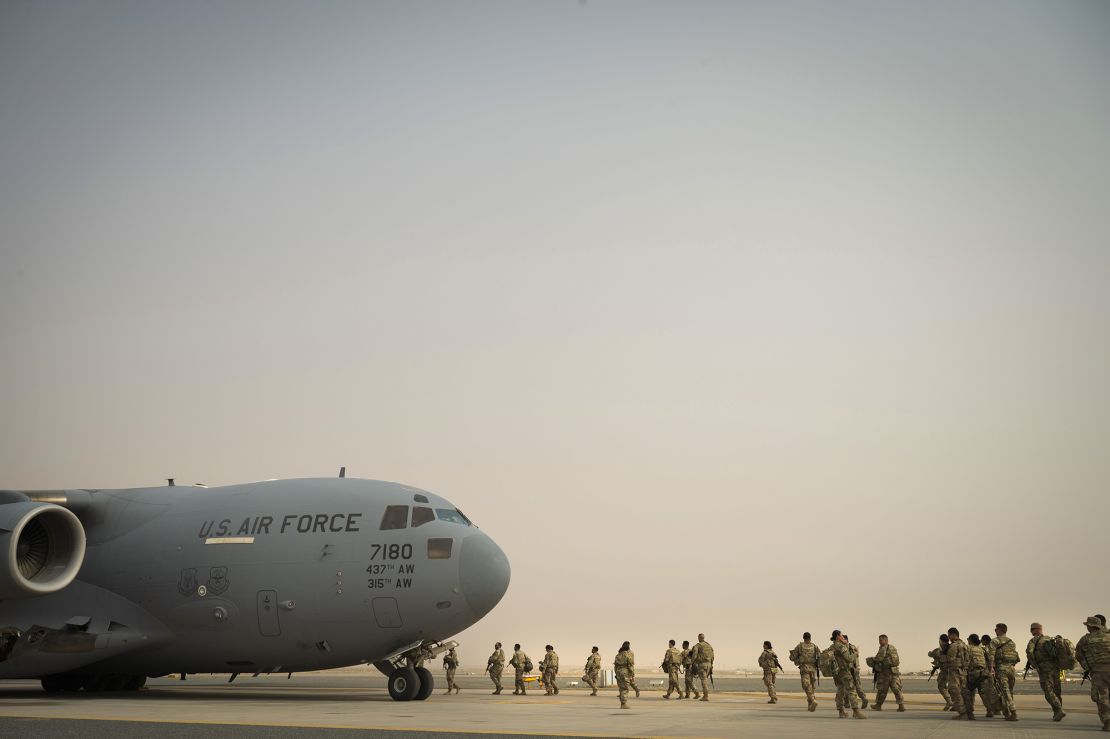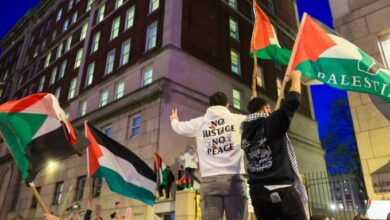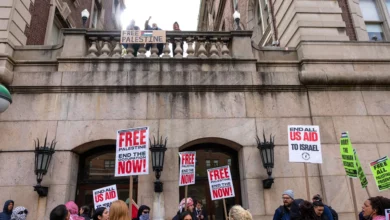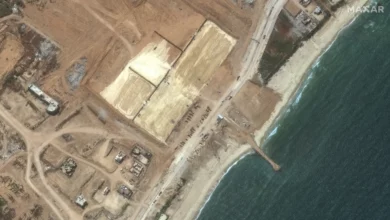
Editor’s Note: A version of this story appears in CNN’s Meanwhile in the Middle East newsletter, a three-times-a-week look inside the region’s biggest stories. Sign up here.
Across the region, the fighting has largely been confined to tit-for-tat attacks between Iran-backed militias on one side and the US, Israel and its allies on the other. But the direct intervention of both Iran and the US in recent weeks has heightened fears that the proxy conflict between the two could turn into a direct one.
So far, the US and Iran have avoided directly confronting each other. The US has attacked Iranian-backed groups in Yemen, Syria and Iraq, while Iran-linked groups have targeted American personnel in Iraq and Syria. Tehran has also struck what it said were anti-Iran groups in Iraq, Syria and Pakistan. Pakistan responded with retaliatory strikes.
The Islamic Republic, which has long opposed the presence of US forces in what it considers to be its backyard, has spent the past few decades building a network of Islamist, anti-Western and anti-Israel militias that it trains, funds and arms. Those groups have become more belligerent of late, especially Yemen’s Houthi rebels, who have disrupted a vital international waterway, wreaking havoc on global trade and prompting Western states to intervene. And it has built ties with and helped fund Hamas, which launched its war on Israel on October 7.
The US, having been trying to pivot away from the Middle East for years, finds itself drawn back into the region. It already had a sizeable military footprint in the region before the war, with over 30,000 troops.
Since the war began, however, Washington has significantly strengthened its military posture in the region, having moved roughly 1,200 US service members, alongside thousands of others aboard Navy carrier strike groups and a Marine Expeditionary Unit roughly 2,000 people strong.
And in some places, including Iraq and Syria, the US military presence overlaps that of Iran and its allies.
As tensions across the region rise, here is where Iran or its allies are present, where US forces are stationed and where both sides have conducted military operations since the start of the Israel-Hamas war:
Lebanon
Lebanon is home to the most powerful paramilitary force in the Middle East: Iran-backed Hezbollah, one of the Islamic Republic’s most effective regional proxies.
The group has its main base on the Israel-Lebanon border and has been exchanging fire with Israel since the Gaza war began. The movement is close to Hamas in Gaza.
While the exact size of the Shiite Islamist group’s arsenal is unknown, experts have estimated it has between 150,000 and 200,000 missiles, as well as rockets and mortars. Hundreds of those missiles “are of high precision and highly destructive,” according to the Institute for National Security Studies in Tel Aviv.
Hezbollah leader Sayyed Hassan Nasrallah claims the group has 100,000 fighters, including active soldiers and reservists. Iran is believed to be Hezbollah’s main arms supplier.
Iraq
Tehran wields significant influence on several Shiite militias closely tied to the Iranian Islamic Revolutionary Guard Corps (IRGC).These include Kataib Hezbollah, Harakat al-Nujaba, and Kata’ib Sayyid al-Shuhada.
Experts say that some of the groups, like Kataib Hezbollah, are more answerable to the authorities in Tehran than to the government in Baghdad. The US Office of the Director of National Intelligence believes it has up to 10,000 members. Iraq is also home to the IRGC-founded Badr Organization as well as Asaib Ahl Al-Haq.
Iran-backed groups have carried out dozens of attacks against US forces in Iraq since the Gaza war started, to which the US has retaliated with airstrikes. Over the weekend, US personnel were injured in a ballistic missile attack on Al-Asad Air Base in Iraq. It appeared to be the second time ballistic missiles were used to target US and coalition forces in the country since October 7.
Until 2008, at the height of the Iraq war, the US had up to 160,000 troops in the country. Today, some 2,500 forces are deployed at several bases, including Erbil AB, Al-Asad AB, and the JOC-I (Union III) base in Baghdad.
Wary of his country becoming a staging ground for a regional war, Iraq’s prime minister this month said that Baghdad is seeking an exit of the US-led coalition. The US has stressed that its military is present in the country at the invitation of the government.
Syria
Iran has a direct presence in Syria, where its Quds Force, an elite unit of the IRGC that handles overseas operations, deployed after the 2011 uprising to back the regime of Syrian ruler Bashar al-Assad. Its personnel served as military and fought on the frontlines for Assad, alongside Iranian-backed militias.
Syria also hosts the Zainabiyoun and Fatemiyoun Brigades, Shiite militias linked to the IRGC who are believed to recruit Afghan and Pakistani fighters.
The US has 800 forces in Syria as part of an ongoing mission to defeat ISIS. Most US forces are stationed in what military officials call “the Eastern Syria Security Area,” where the US supports the anti-regime Syrian Democratic Forces (SDF) in the country’s northeast. There is also some US troop presence in Syria’s southeast, where the US supports the Syrian Free Army, which also opposes the Syrian regime. The regime considers the US to be an invader.
US troops in Syria have increasingly come under attack by Iran-backed groups in recent weeks, to which the US has responded with airstrikes.
Yemen
At the heart of today’s proxy conflict between Iran and the US are Yemen’s Houthi rebels, who have been stepping up their strikes on ships in the Red Sea, saying they are revenge against Israel for its war in Gaza.
The group is currently in control of northern Yemen, and was engaged in nearly eight years of fighting with a US-backed and Saudi-led coalition before a halt in fighting last year.
Home-grown Houthi weapons were largely assembled with Iranian components smuggled into Yemen in pieces. But the group later made progressive modifications that have added up to big overall improvements, an official familiar with US intelligence told CNN previously.
The US military stations warships in the Red Sea, off Yemen’s coast, from which it has been striking Houthi targets. In December, the US assembled a coalition of more than 20 countries to safeguard commercial traffic against Houthi attacks in the Red Sea.
The Gaza Strip and Israel
The besieged Gaza Strip is home to the Hamas militant group, which Israel believes to have had around 30,000 fighters before the war. An Islamist organization with a military wing, Hamas was established in 1987, and on October 7 launched an attack on Israel that killed around 1,200 people and took 253 others hostage, according to Israeli authorities.
Iran has built closer ties with the group in recent years; unlike all of Tehran’s other allies in the region, Hamas is a Sunni Muslim organization, rather than a Shiite one.

There is no evidence that Iran knew in advance about the October 7 attacks and Iran is not believed to have as much influence on Hamas as its other allies in the region. But the US believes that Iran has historically provided up to $100 million annually in combined support to Palestinian militant groups, including Hamas and the Palestinian Islamic Jihad (PIJ), another Gaza-based militant group.
On the other side of the border, Israel is the largest recipient of US military aid, with Washington having contributed more than $130 billion in assistance since the Jewish state’s founding in 1948.
Gulf Arab states and Turkey
While the Israel-Hamas war has not yet spilled into the Gulf Arab states, some of those nations feel vulnerable as they have been targeted by Iran-linked groups before. Saudi Arabia and the United Arab Emirates were attacked by the Houthis in 2019 and 2022, respectively.
The US-allied Gulf states are also home to some of the biggest deployments of US troops in the world.
The US has around 13,500 US forces in Kuwait, the largest American military presence in the region. Only Germany, Japan, and South Korea host more US forces than Kuwait.
The US’ second-largest military presence in the region is in Qatar, which hosts around 10,000 US forces at Al-Udeid Air Base, the largest US military base in the Middle East that is also home to the US Central Command’s Forward Headquarters and the Combined Air Operations Centre. The US this month quietly reached an agreement that extends its military presence for another 10 years at the base.
Qatar maintains relations with Hamas, having hosted its political office the capital Doha since 2012.
More than 2,700 US forces are stationed at the Prince Sultan Air Base in Saudi Arabia, while the UAE hosts 3,500 US military personnel at Al Dhafra Air Base, which is home to the Gulf Air Warfare Center.
Other hubs for US military presence include Bahrain, which hosts the US Naval Forces Central Command and is home to the Navy’s Fifth Fleet, and Jordan, which hosts around 3,000 US troops. Turkey hosts 1,465 military members at Incirlik airbase.




